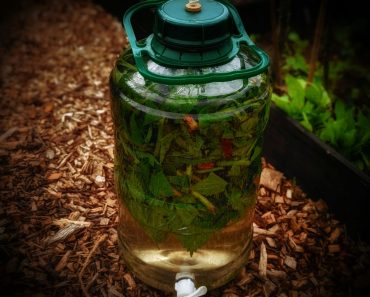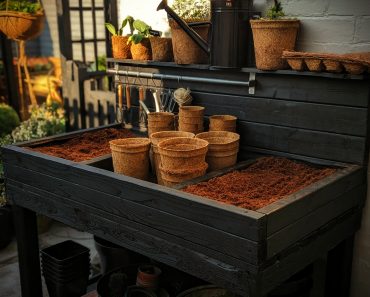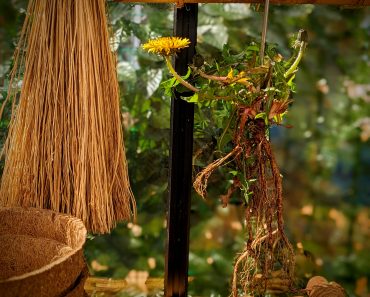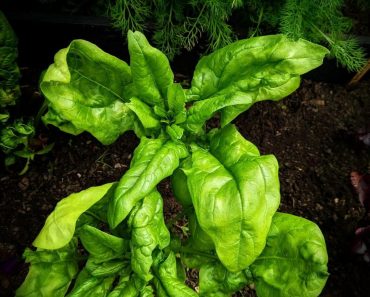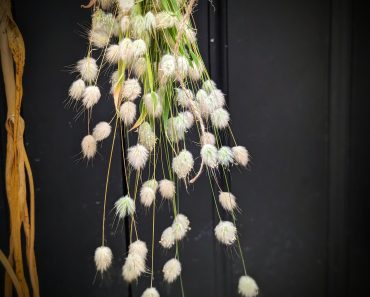Cirsium rivulare (Atropurpureum) or ‘Brook Thistle’ is a gorgeous Hardy Perennial with vibrant Purple pin-cushion blooms that explode with colour from April – September. A wonderful plant for various planting schemes, adding height and interest to any garden! Perfect for the back of borders or Container Growing….
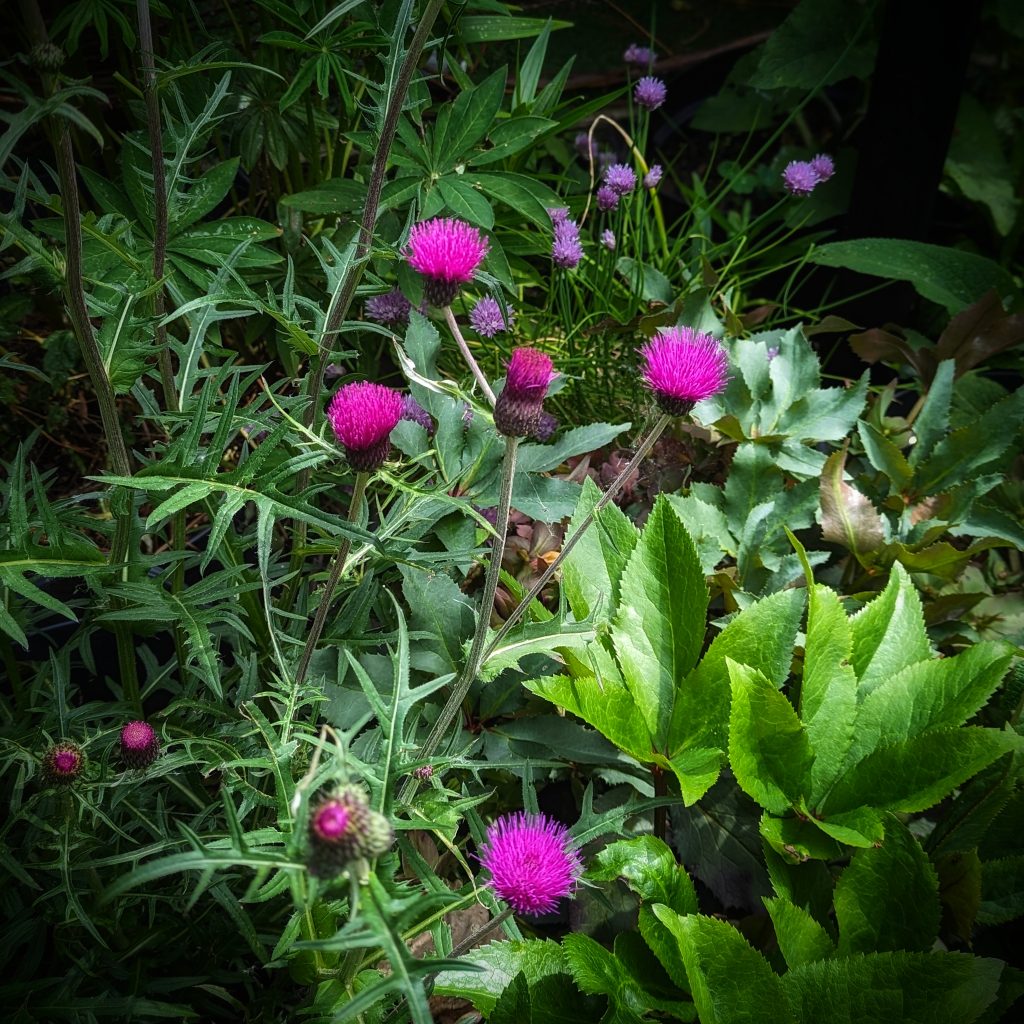
This post may contain Affiliate links please see my disclosure policy
Cirsium Rivulare Origins
Cirsium rivulare is a member of the Asteraceae family also known as the ‘Daisy Family’ which also includes, Chamomile, Sunflowers, Dandelions, Marigolds, Zinnia, Dahlia and even Lettuce! Native to Eastern and Western Europe and naturalised in Sweden and Belgium. In the UK it is an adventive Species, usually found in Gardens, lovingly assisted and nurtured by thistle lovers all over the country.
What’s In A Name ?
Its latin name ‘Cirsium rivulare‘ has two meanings. ‘Cirsium‘ is derived from the ancient Greek kirsion, the name for a thistle and ‘rivulare’ means brook loving- due to the plants preference to moist riverside conditions.
Other Names for Cirsium Rivulare are Plume Thistle, Brook Thistle, Cirse des ruisseaux (French), Cardo dei rivi (Italian), Cardo muelle de arroyo (Spanish), Bachdistel (German), Cirze e krojeve (Albanian), Pichliac potocny (Slovak), Potocni osjak (Croatian), Pchac potocni (Czech), Backtistel (Swedish), Cardigassa rivular (Catalan), Paupine usnis (Lithuanian), Ostrozen takowy (Polish), Csermely acat (Hungarian), Scai de ape (Romanian), Potocni osak (Slovene).

Cirsium rivulare Characteristics
Cirsium rivulare is a clump-forming perennial with Oblong-lance-shaped, dark green leaves that reach lengths of roughly 45cm long. Stems can reach upto 1.5 m in height and each one produces, reddish purple thistle-like flowers approx 3 cm across in early summer.
Why I Love Thistle Plants!
I love the unusual and quirky…I see thistles as somewhat of an underdog in the plant world! Usually prickly and menacing, but to me…always beautiful! Milk Thistle for example! Never try to pick one with an ungloved hand!-But WOW are they spectacular! Their prickly and menacing appearance is all a part of the charm! I Love the- look but don’t touch attitude! A flower with Sass! My Kind of flower! Cirsium rivulare has that same energy, but with one difference….
Expect a Tickle Not a Prickle!
Yep! You can approach this plant with an Ungloved hand, without fear! You will not wince in Pain or have to pull any evil barbs from your hand! The jagged Foliage and thistle-like flowers of Cirsium rivulare will do you no harm…despite appearances!
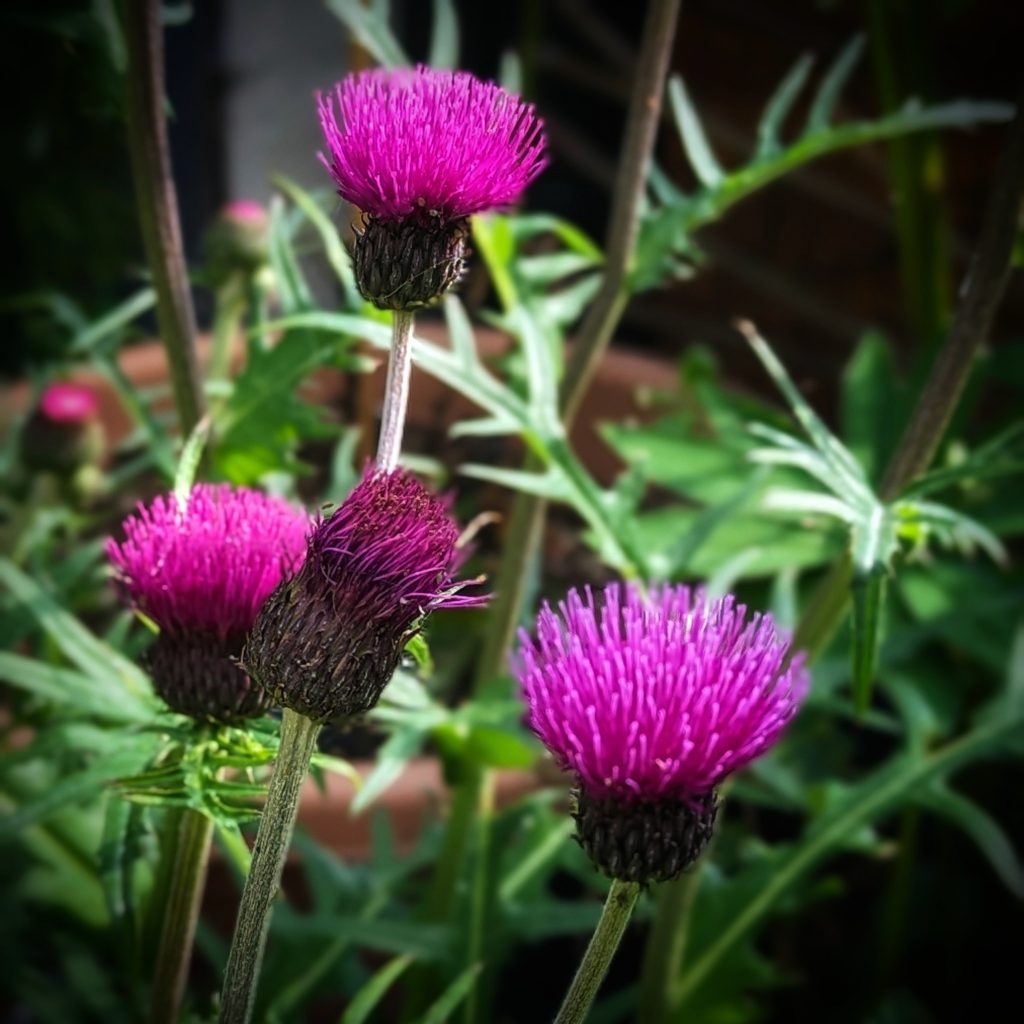
Will Cirsium rivulare Spread?
Cirsium rivulare slowly forms a clump of rhizomes (underground stems), there will be spread, but certainly not invasive, it will stay confined to the bed you placed it. Even its airborne seeds that eventually fluff up and travel by wind will not create new vast colonies that will take over your garden! Unlike its relative the Dandelion, this plant is very well behaved by comparison!
Cirsium rivulare and Pollinators
Does Cirsium rivulare attract Bees and Butterflies? You Bet! They love this flower! Anyone who has this flower in their garden will tell you how popular it is with pollinators- it attracts various species of Bee and Butterfly, the Purple thistle flowers make wonderful landing pads!
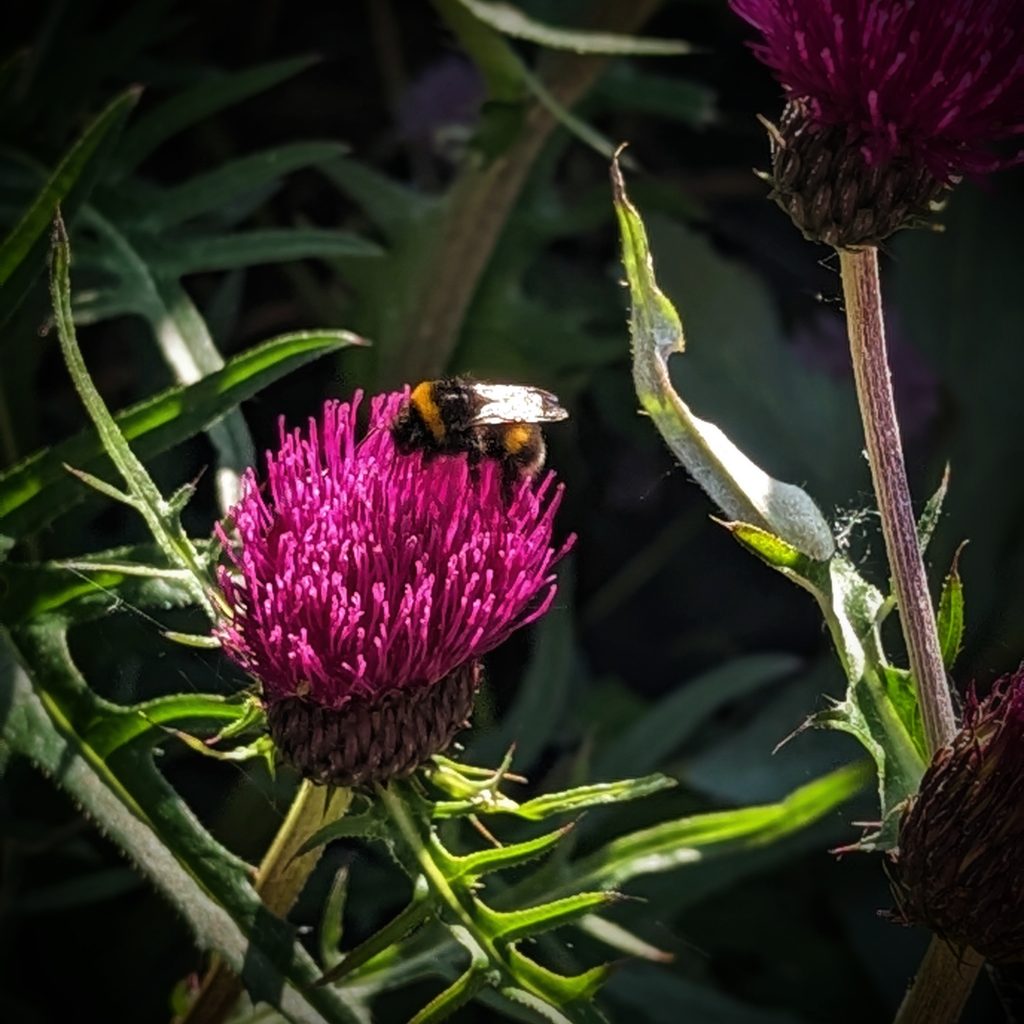
Cirsium rivulare In The Vegetable Garden
Thanks to its Pollinator attracting qualities Cirsium rivulare is a Wonderful Plant for Vegetable gardens and even Cottage gardens. *Cirsium rivulare is also non toxic, so perfectly safe for your 4 legged gardening companions too!
How To Grow Cirsium rivulare
The easiest way to Grow Cirsium Rivulare is by first buying an already established plant…Click Here
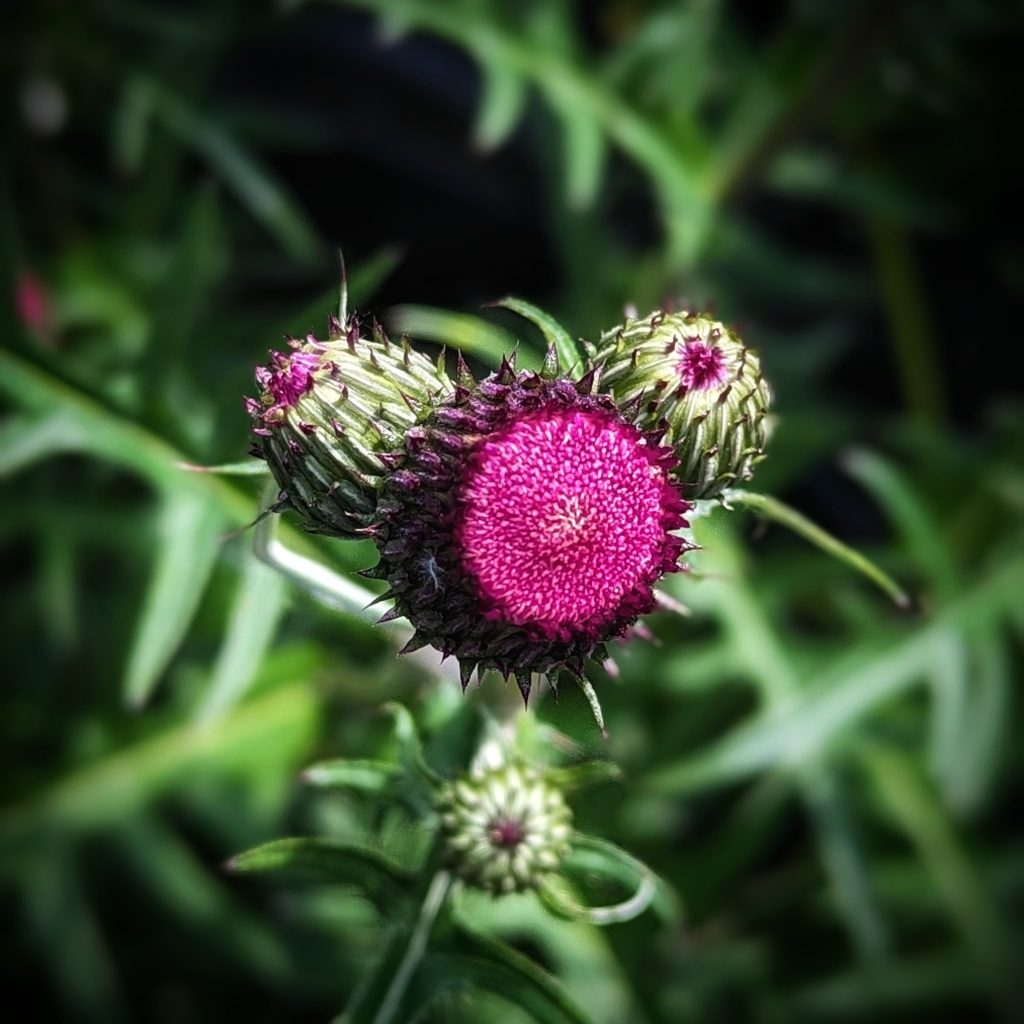
- Plant Out May-September
- Grow in a well drained moist soil, in a full sun position
- Flowers- May- September
- When the last flowers fade, cut the whole stem down to the ground in Autumn
- Lift and divide congested clumps in Autumn or Spring. (Sept- November or March-May)
Dividing
Cirsium Rivulare is easily divided and is a useful way to create new plants! Division is best practiced when the plant is dormant in winter or early spring.
How To Divide Cirsium Rivulare
- Dig up the parent plant using a fork or Spade
- Gently lift the plant out of the ground and shake away any loose dirt clogging the roots
- There are 2 Ways to divide Cirsium Rivulare…
- Gently pull or tease the roots apart with your hands to divide
- Or cut with the edge of a spade or sharp knife/saw
- Replant the divided plants and water in
Useful Dividing Tools
Affiliate links
Why Should You Divide Cirsium Rivulare ?
1. Dividing rejuvenates the plant and stimulates the production of new growth. A Congested and overcrowded root system can lead to nutrient deficiency, restricted airflow and a lack of water absorption…all of this can lead to unhealthy vulnerable plants that are at risk of developing disease.
2. Dividing can control the size of your plant if you feel it is outgrowing its space
3. Extra Plants! An inexpensive way to increase the amount of Cirsium Rivulare plants in your garden!
Deadheading Cirsium Rivulare
I like to cut back faded flower stems after the 1st flush of flowers have spent, this encourages a second bloom later on in the season
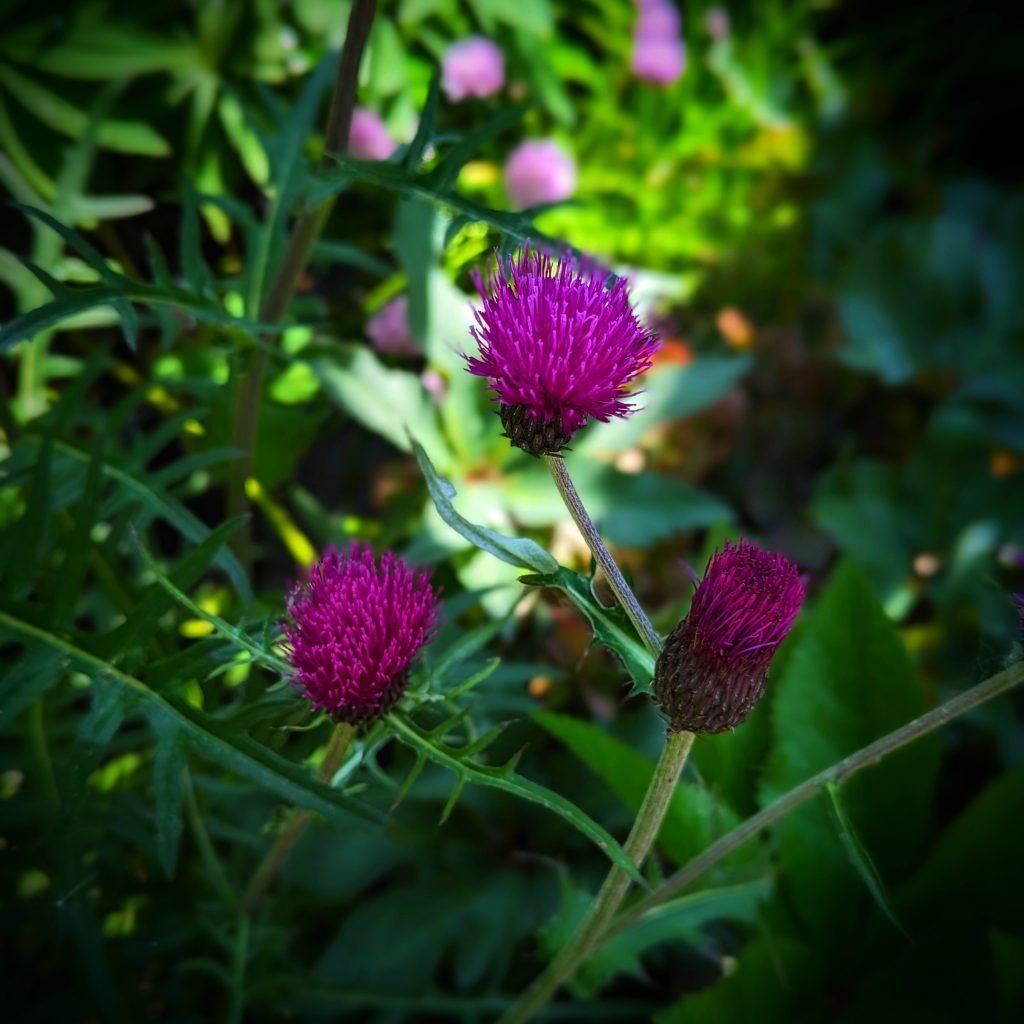
Cirsium Rivulare Water Requirements
This plant will cope with dryer conditions, but be sure to give it a little extra watering during periods of prolonged drought
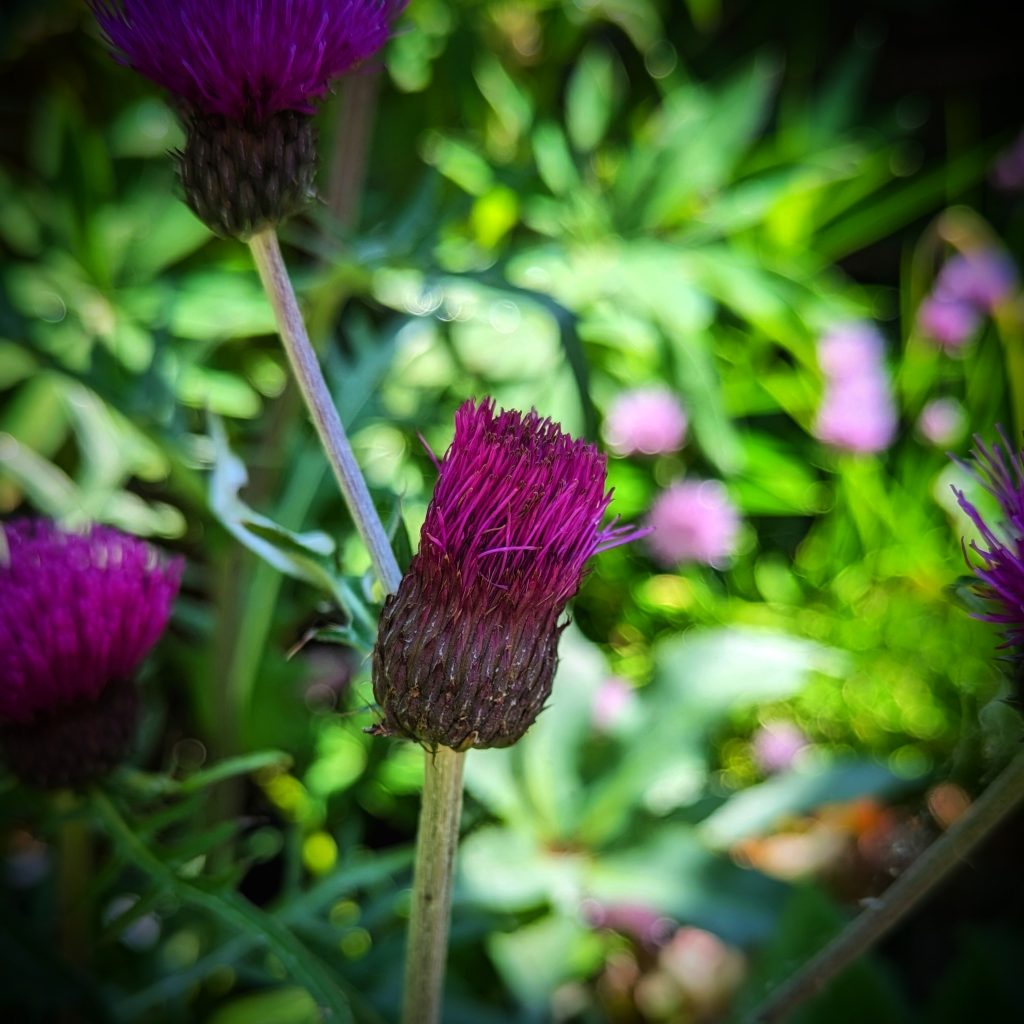
Looking For More Flower Growing Posts?
Looking To Grow A Vegetable Garden?
Looking For more ‘Homely’ Inspo ?
Have a Nosey Around the Blog! See what i’ve been Baking, Growing and Drinking! Also, pop over and say Hi on Instagram
Check Out These Frugal DIY Posts too…
DIY Potting Bench made from scrap materials
DIY Rustic Fence Made From Branches
Make a Free DIY Crazy Paving Path

